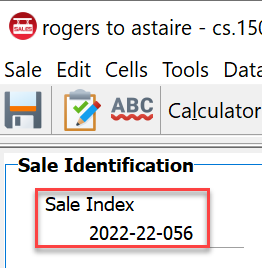Sale Indexes
![]()
Sale indexes are the numbers that will be used as permanent tracking numbers attached to sales. The value of the sale index is specific to your setup and needs. It can be used to track paper files or other records related to the sale.
An important item to consider is what values your users may already be using to track items related to the sale. The Enterprise DataLog does not use the Database ID to identify sales. This is because sales can be loaded from multiple databases.
The existing Database ID is not unique across all databases. Many times it is desirable to have a sale index that has some type of prefix that represents the year of the sale and possibly the county where the sale took place. Following that number, a unique number can be assigned. This method works well for users who keep paper binders of sales by year and organized by county. It also helps keep the unique number low so pre-numbered tabs or stickers can be used in sale binders or on maps.
Here is an example of a sale index: 2022-22-056

The year is 2022; the county code is 22; and the sale number is 056 because it was the 56th sale in that county that year. The zero is a place holder for up to 999 sales. If there would be a chance for 1000 or more sales in the year, the four-digit number 0056 would be used.
